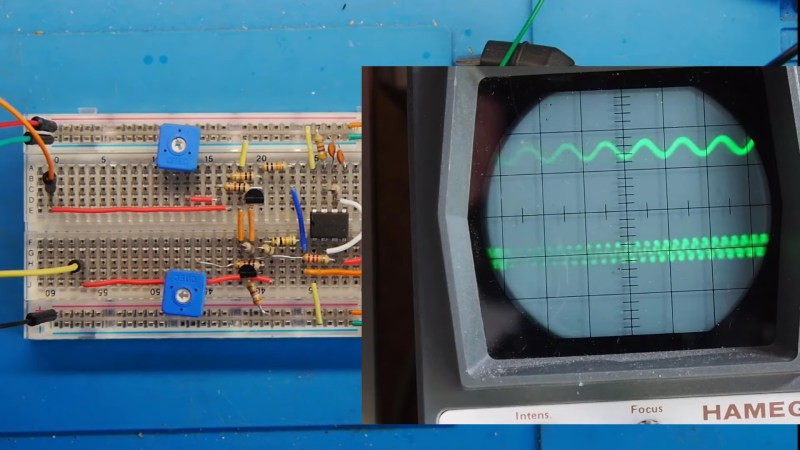Double Your Analog Oscilloscope Fun with this Retro Beam Splitter

These days, oscilloscope hacking is all about enabling features that the manufacturer baked into the hardware but locked out in the firmware. Those hacks are cool, of course, but back in the days of analog scopes, unlocking new features required a decidedly more hardware-based approach.
For an example of this, take a look at this oscilloscope beam splitter by [Lockdown Electronics]. It’s a simple way to turn a single-channel scope into a dual-channel scope using what amounts to time-division multiplexing. A 555 timer is set up as an astable oscillator generating a 2.5-kHz square wave. That’s fed into the bases of a pair of transistors, one NPN and the other PNP. The collectors of each transistor are connected to the two input signals, each biased to either the positive or negative rail of the power supply. As the 555 swings back and forth it alternately applies each input signal to the output of the beam splitter, which goes to the scope. The result is two independent traces on the analog scope, like magic.
More after the break…
If you’re wondering how this would work on a modern digital scope, so was [Lockdown Electronics]. He gave it a go with his little handheld scope meter and the results were surprisingly good and illustrative of how the thing works. You can clearly see the 555’s square wave on the digital scope sandwiched between the two different input sine waves. Analog scopes always have trouble showing these rising and falling edges, which explains why the beam splitter looks so good on the CRT versus the LCD.
Does this circuit serve any practical purpose these days? Probably not, although you could probably use the same principle to double the number of channels on your digital scope. Eight channels on a four-channel scope for the price of a 555? Sounds like a bargain to us.